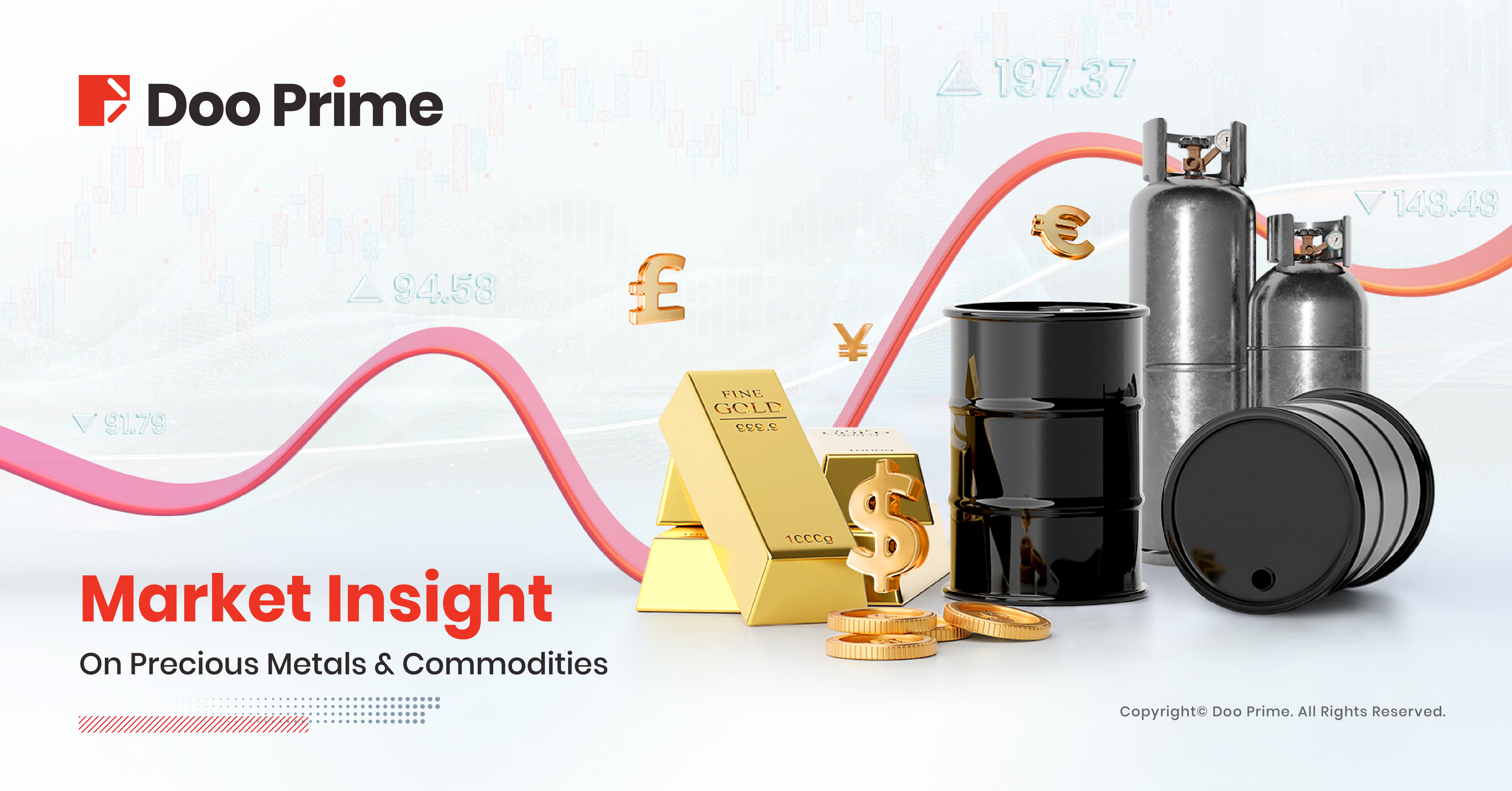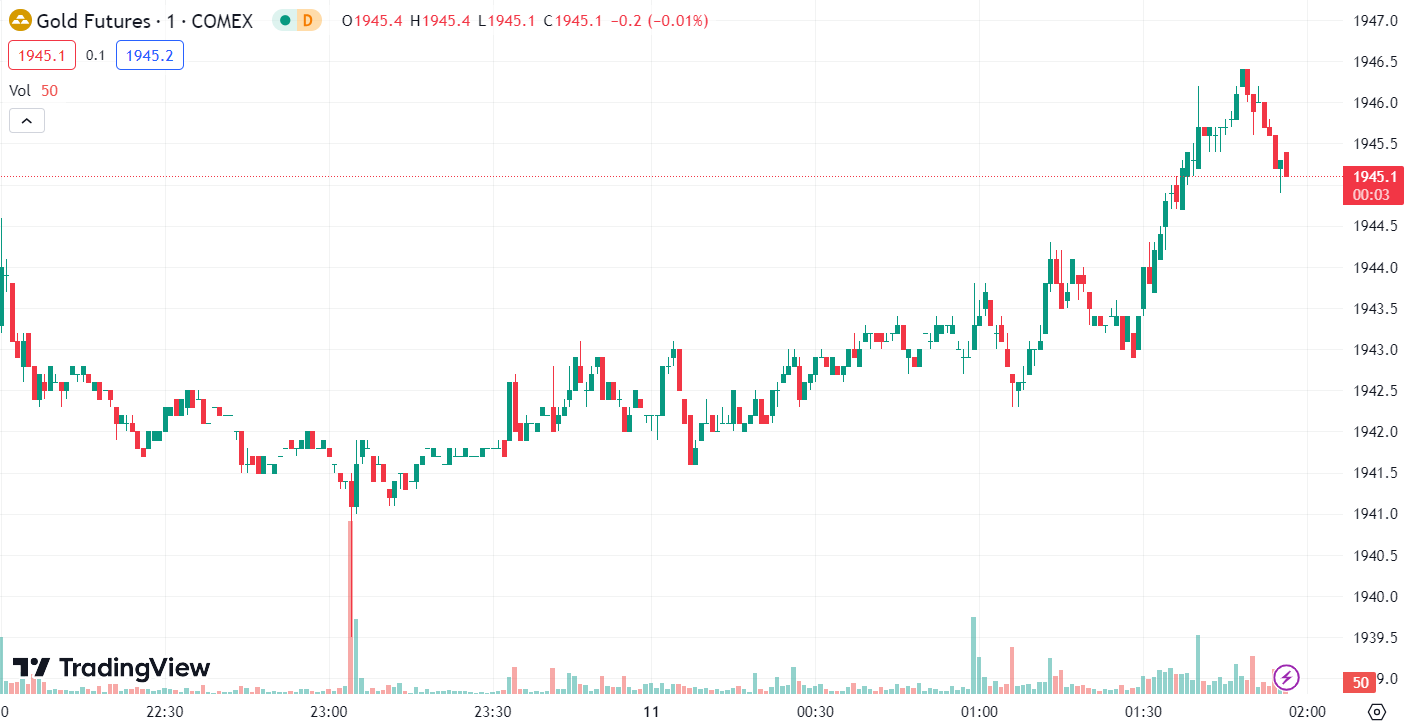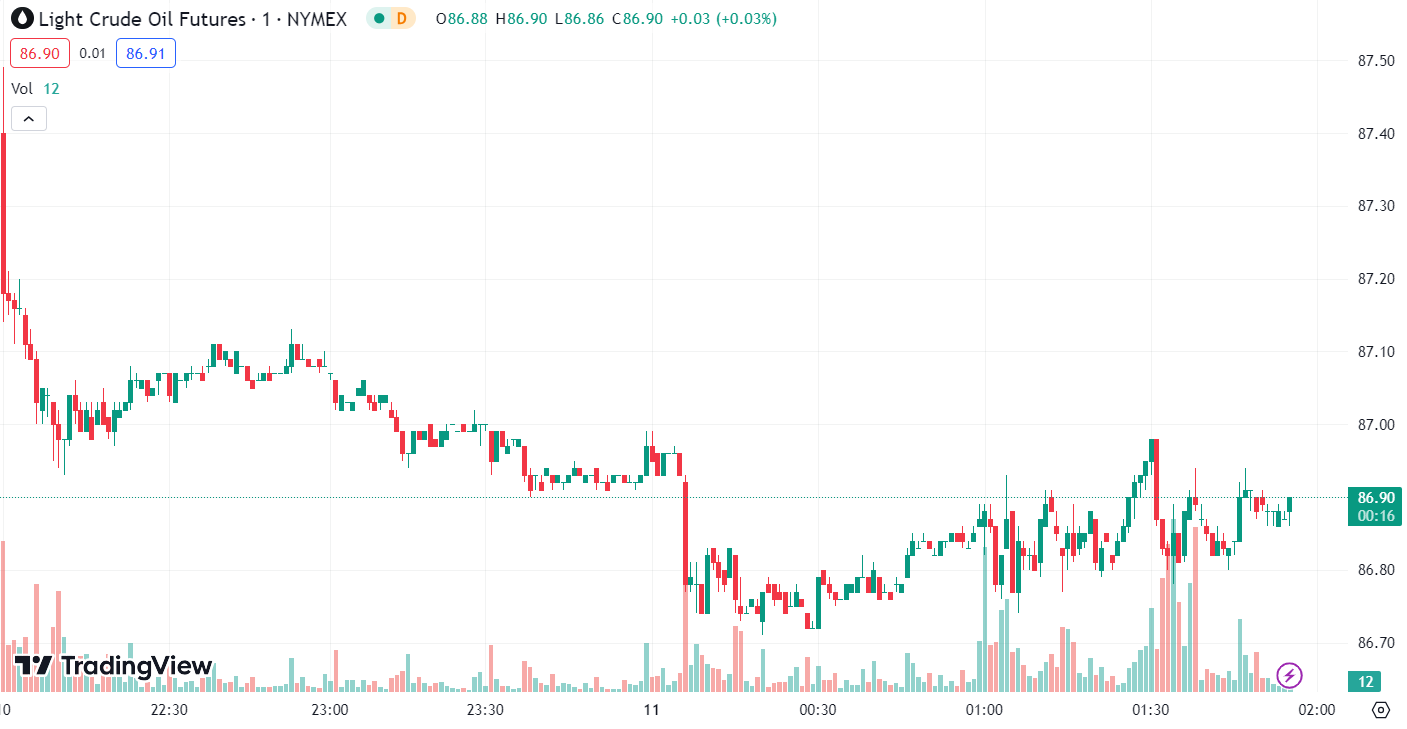
Last Friday, as expectations of the Federal Reserve tightening its policy continued to strengthen, U.S. yields edged slightly higher, resulting in a minor decline in gold prices.
Meanwhile, Saudi Arabia and Russia’s production cuts provided an upward momentum for global oil prices, leading to a rise and the attainment of a 9-month high.
Gold >>
Last Friday, gold prices experienced a minor decline, closing at $1,918.65 per ounce. The continued rise in U.S. Treasury yields due to growing expectations of Federal Reserve policy tightening had a slight upward impact on yields of various maturities, limiting the day’s gains in gold prices.
Investors are eagerly awaiting this week’s release of the U.S. August Consumer Price Index (CPI) and retail sales data to gauge the forthcoming monetary policy decisions by the Federal Reserve.
Currently, the market expects a 25 basis point rate hike for the remainder of the year, but there is uncertainty about whether this will occur in November or December.
From a technical perspective, gold faced resistance around the $1,930 mark, experiencing narrow-range consolidation. During the Asia-Europe session, prices accelerated, briefly breaking above $1,927 before retreating. In the afternoon, prices declined further to around $1,922, entering a sideways pattern.
In the late U.S. session, there was a swift downward movement to around $1,920, followed by a rapid rebound. Ultimately, prices broke below the $1,929 level, experiencing a decline and settling at around $1,917 in the early morning after an earlier high.
Technical Analysis:

Today’s short-term gold trading strategy suggests a primary focus on short-selling during rebounds, with long positions considered during pullbacks.
- Key resistance levels to watch in the short term are around 1928-1933.
- Key support levels to watch in the short term are around 1905-1900.
WTI Crude Oil >>
Last Friday, in the late U.S. session, crude oil prices closed higher, up 0.52%, at $87.20 per barrel, marking a nearly 9-month high. The production cuts implemented by two major oil-exporting countries, Saudi Arabia and Russia, triggered a chain reaction, creating an upward trajectory for global oil prices.
Declining supply from major oil-producing nations and limited increases in U.S. drilling activities have both contributed to the upward momentum in crude oil prices. However, aside from supply concerns, macroeconomic factors have also influenced oil prices.
A strong U.S. dollar has made oil prices, typically denominated in dollars, more expensive for traders. Additionally, disappointing economic data from the Eurozone could potentially dampen the underlying demand for oil.
Crude oil prices continued their bullish trend in volatile trading. During the Asia-Europe session, prices experienced a slight decline, testing the $87 per barrel threshold. In the afternoon, prices stabilized and rebounded around the $86.10 per barrel mark.
During the European session, prices staged a continuous rally, breaking above and maintaining levels above the $87 per barrel mark. In the late U.S. session, prices accelerated higher, briefly surpassing the $87.90 per barrel level before experiencing some retracement, ultimately closing with a fluctuation.
Technical Analysis:

Today’s short-term strategy for crude oil suggests a primary focus on going long during pullbacks, with shorting on rallies considered as a secondary option.
- Key resistance levels to monitor in the short term are around 88.5-89.0.
- Key support levels to monitor in the short term are around 85.5-85.0.
Forward-looking Statements
This article contains “forward-looking statements” and may be identified by the use of forward-looking terminology such as “anticipate”, “believe”, “continue”, “could”, “estimate”, “expect”, “hope”, “intend”, “may”, “might”, “plan”, “potential”, “predict”, “should”, or “will”, or other variations thereon or comparable terminology. However, the absence of such terminology does not mean that a statement is not forward-looking. In particular, statements about the expectations, beliefs, plans, objectives, assumptions, future events, or future performance of Doo Prime will be generally assumed as forward-looking statements.
Doo Prime has provided these forward-looking statements based on all current information available to Doo Prime and Doo Prime’s current expectations, assumptions, estimates, and projections. While Doo Prime believes these expectations, assumptions, estimations, and projections are reasonable, these forward-looking statements are only predictions and involve known and unknown risks and uncertainties, many of which are beyond Doo Prime’s control. Such risks and uncertainties may cause results, performance, or achievements materially different from those expressed or implied by the forward-looking statements.
Doo Prime does not provide any representation or warranty on the reliability, accuracy, or completeness of such statements. Doo Prime is not obliged to provide or release any updates or revisions to any forward-looking statements.
Disclaimer
While every effort has been made to ensure the accuracy of the information in this document, DOO Prime does not warrant or guarantee the accuracy, completeness or reliability of this information. DOO Prime does not accept responsibility for any losses or damages arising directly or indirectly, from the use of this document. The material contained in this document is provided solely for general information and educational purposes and is not and should not be construed as, an offer to buy or sell, or as a solicitation of an offer to buy or sell, securities, futures, options, bonds or any other relevant financial instruments or investments. Nothing in this document should be taken as making any recommendations or providing any investment or other advice with respect to the purchase, sale or other disposition of financial instruments, any related products or any other products, securities or investments. Trading involves risk and you are advised to exercise caution in relation to the report. Before making any investment decision, prospective investors should seek advice from their own financial advisers, take into account their individual financial needs and circumstances and carefully consider the risks associated with such investment decision.


